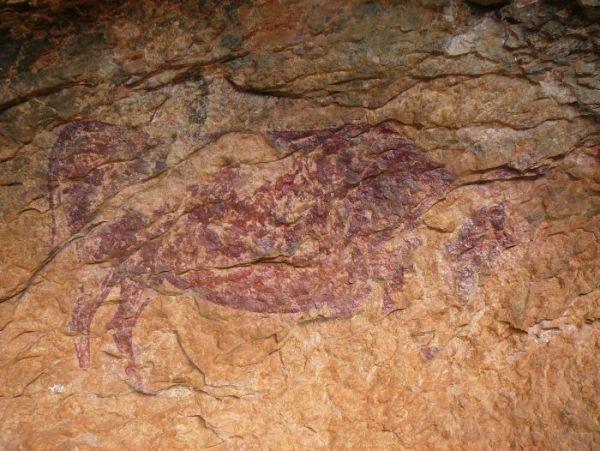In 2014 a total of nine, previously unknown, groups of rock art were discovered in Capçanes, and became the largest concentration of rock art in Catalonia. Work has recently been completed on their restoration and conservation and guided tours are now available. During this excursion you can see some of the Priorat district's artistic treasures.
ROCK ARTStart your route with a visit to the valleys of Capçanes, which will reveal a prehistoric treasure, the largest concentration of rock art in Catalonia, with a total of 19 sites located in three ravines. You will be able to see the rock painting called “the slaughter”, the largest animal for which there is such documentary evidence in our country. Just a few minutes by car from the centre of Capçanes, you can take
guided tours on the first Saturday of every month. Tours for groups are also organised subject to prior arrangement.
CAPÇANES, THE VILLAGE AND THE FOOTPATHSAfter your visit you can enjoy some of the local Priorat cuisine in the village of
Capçanes. The village stands at an altitude of 223 metres above sea level in a valley that is circled by the Espasa, Picotxa, Montalt and Pinar dels Flares mountain ranges and the Toró cliff. In the afternoon you could follow some of the various footpaths that leave from the village to explore such places as the Tortó and Ricord ravines, and the Rock of Llaberia.
CAPÇANES WINE CELLARThe following day, after spending the night in one of the area's rural guest houses, you could visit the
Capçanes wine cellar and, in addition to tasting the wines and discovering the Montsant D.O. and the wine culture of the Priorat district, you will find many other things to do, such as kayaking on the Guiamets reservoir, or horse riding around the vineyards.
THE ROUTE OF DRY STONE WALLS AND OTHER CONSTRUCTIONSIf you can spend a couple more days in the area don't miss the
Dry Stone Route, in the area known as Taules, to the east of the town. In a very small area you will find a large variety of dry-stone construction such as margins, dry-stone huts, farmer's huts, animal pens, dens, store-rooms, cubbyholes set into dry stone walls, mounds, shelters and a lime oven.
Have we managed to inspire you? If you have any other interesting suggestions please send them to us on Facebook or publish your photos on Instagram with the hashtag #patrimonicultural 